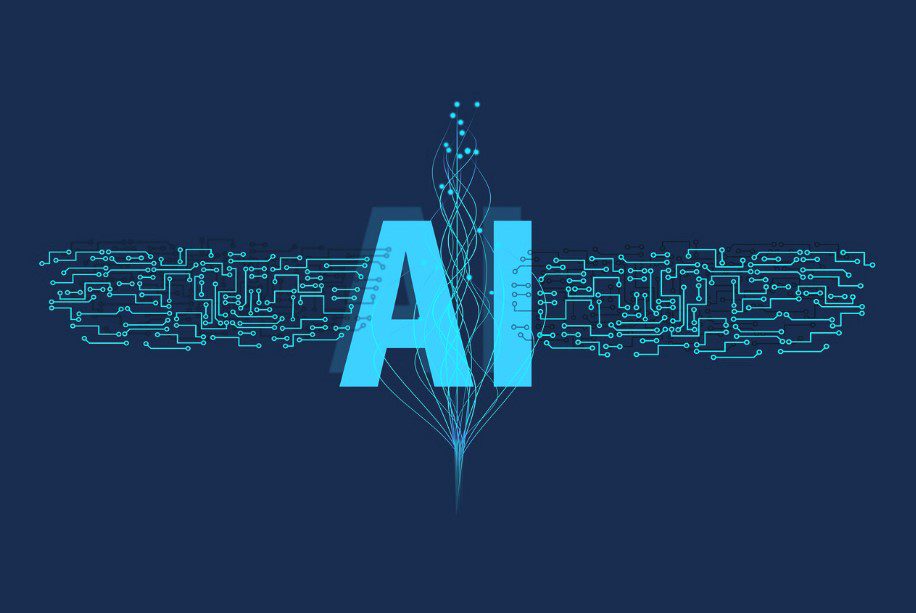The outlook of the future job market is fascinating, just as it is complex. It remains speculative as to what kinds of jobs will be available in the decades to come, and the necessary skill-sets that go with the transition.
Core hard-skill jobs that are repetitive and tiresome, and many desk jobs will be taken over by automation. As things stand in 2023, AI tools such as Generative AI are already taking many jobs, and therefore disrupting the workplace.
It all started in 2020, when COVID-19 and its impact on the manufacturing and service industries influenced CEOs and employers to rethink how they employed the workforce. Most opted for automation and since then, they have not looked back.
The future generation of adults will have to contend with advanced automation and work side by side with robotics. Many computer agents are actually taking over tasks that once belonged to humans.
For example,
- Chatbots have taken over many customer support services.
- AI agents are already at the forefront of computer coding.
- Video, image, and text creation is now being done by AI.
- Human drivers are being replaced by automation.
- Human tellers in the banking sector are disappearing.
- Fraud detection is being done by AI.
- Etc.
In a 2017 report by McKinsey Global Institute, robotics will
take 800 million jobs by 2030
According to the report, however, new opportunities will avail themselves even as the digital landscape evolves. This will depend on the preparedness of learners today to master and harness 21st-century skills.
Other factors such as globalization, urbanization, competitiveness, consumer preferences, and speed, will be crucial in shaping how job trends and careers evolve.
So What Next for All of Us?
Futuristic job prospects continue to spark debates around the world as to what kind of education and parenting strategies will prepare the largely Generation Alpha and Z kids for the future job market.

In order to prepare children for work tomorrow, education today needs to focus on developing relevant skills. The quality of education they acquire will have a significant impact on their success.
According to Jack Ma, founder of Alibaba Group in 2018,
If we do not change the way we teach, 30 years from now, we’re going to be in trouble
Below are only a few solutions we must harness in order to kickstart future employability:
1. Instill Tech-Mindset:
It all starts with the preparedness by parents, communities, educators, and governments to see future career skills through the eyes of technology.
While robotics and AI may seem distant for now (they are not), these will become commonplace just like mobile personal computers are ubiquitous today. Only 20 years ago, not many imagined that cell phones would be so personal and useful today.
They now help us accomplish office tasks on the road and have demonetized numerous skill-sets from the past.
Also true is that employers are hiring for jobs that were non-existent only ten years ago. A case in point is the Social Media Influencer job skill, which is helping drive online businesses.
Perhaps it is also important to take a snapshot of what the future will look like.
Here is the thing, as the world goes away from the first wave of digitalization and welcoming the second, it is worth noting what is expected at home and in the workplace.
Well,
- We all expect to receive faster delivery of services, away from the lackluster habits existing today.
- We plan to move away from the complex implementation to simpler interaction with computers and other forms of technology.
- Intelligent automation is to become the norm to ensure predictive productivity. This is designed to satisfy client needs on-demand other than mass production and unnecessary services.
Then we can forge out workable employability implementations as the years go by.
2. Focus on STEM Education:
Encourage your child to develop a strong foundation in science, technology, engineering, and mathematics (STEM). These subjects form the basis for many technology-driven careers. Encourage their interest in coding, robotics, and related fields.
Why STEM?
STEM education will help your child develop critical thinking skills. In a world where technology is constantly changing, it is important for children to be able to think critically about new information and technologies.
In addition, STEM teaches children how to break down problems into smaller, more manageable steps. This skill is essential for success in any field, but it is especially important in a world where technology is constantly creating new problems and opportunities.
STEM will also help your child nurture creativity. STEM education encourages children to think outside the box and come up with new solutions to problems. This skill is essential for innovation, which is essential for the future of technology.
Finally, STEM education also helps children develop a love of learning and a sense of curiosity. These are essential qualities for success in any field, and they will help your child thrive in a future driven by technology.
3. Encourage Lifelong Learning:
The job market is evolving rapidly and thus, it’s important for your child to cultivate a mindset of continuous learning. Encourage them to pursue their interests, explore new subjects, and embrace opportunities for personal and professional growth.
Here are some ways that lifelong learning can help your child in a future:
- Help them stay ahead of the curve. Technology is constantly changing, so it’s important for your child to be able to learn new skills and adapt to new technologies.
- Give them the skills they need for the jobs of the future. Many of the jobs that will be available in the future haven’t even been created yet. Lifelong learning will help your child develop the skills they need to be successful in these new jobs.
- Help them build a strong foundation for their future. Lifelong learning is more than just learning new skills. It’s also about developing a love of learning and a curiosity about the world. These are essential qualities for success in any field.
- Teach them to read. Reading wide is important for kids of tomorrow because it helps them develop a broad range of knowledge and skills. By reading many books, kids can learn about different cultures, historical periods, and scientific concepts. They can also develop their critical thinking skills, vocabulary, in addition to writing skills.
4. Cultivate Adaptability and Resilience:
Technology can change rapidly, and job roles may evolve or become obsolete. Teach your child the importance of adaptability and resilience in the face of change. Help them develop a growth mindset that embraces challenges and learns from failures.
- Adaptability is the ability to change and adjust to new situations. In a world where technology is constantly changing, it is important for children to be adaptable. They need to be able to learn new things quickly and adapt to new ways of doing things.
- Resilience is the ability to bounce back from challenges. In a world where technology can be disruptive, children need to be resilient. They need to be able to handle setbacks and disappointments.
Here are some ways you can help your child develop adaptability and resilience:
- Expose them to new experiences. The more experiences your child has, the more adaptable they will be. Encourage them to try new things, meet new people, and travel to new places.
- Help them develop a growth mindset. A growth mindset is the belief that intelligence and abilities can be developed through hard work and effort. Help your child understand that they can learn new things and improve their skills with practice.
- Teach them how to cope with setbacks. Everyone experiences setbacks in life. Help your child learn how to cope with disappointments and failures in a healthy way.
- Be a role model. Children learn by watching the adults in their lives. If you want your child to be adaptable and resilient, be a role model for these qualities. Show them that you are able to adapt to new situations and overcome challenges.
5. Expose Them to Various Careers:
Introduce your child to a wide range of careers that are influenced by technology. Attend career fairs, visit workplaces, and connect with professionals in different fields. This exposure will help them understand the diverse opportunities available and make informed decisions.
Having multiple careers can help your child in a number of ways.
- Increased earning potential. In a world where technology is constantly changing, it is important to have skills that are in demand. Having multiple careers can help your child stay ahead of the curve and increase their earning potential.
- More job satisfaction. Having multiple careers can help your child find a job that is both challenging and rewarding. It can also help them explore their interests and find something that they are passionate about.
- More flexibility. In a world where work-life balance is increasingly important, having multiple careers can give your child more flexibility. They may be able to work from home, set their own hours, or take breaks between careers to travel or pursue other interests.
In order to have your children walk this path,
- Expose them to different career paths.
- Encourage them to get involved in extracurricular activities.
- Help them develop transferable skills.
- Be supportive.
6. Foster Entrepreneurial Spirit:
Encourage your child to think creatively and develop an entrepreneurial mindset. Teach them about innovation, problem identification, and solution creation. Help them understand the value of taking calculated risks and being proactive.
Here are some tips for helping your child develop entrepreneurial skills:
- Expose them to entrepreneurship. Talk to your child about entrepreneurship and help them explore their interests. You can do this by taking them to business events, visiting small businesses, or talking to entrepreneurs.
- Encourage them to get involved in extracurricular activities. Extracurricular activities can help your child develop new skills and explore different interests. They can also help them network with people who may be able to help them start their own business in the future.
- Help them develop business skills. Business skills are skills that are essential for starting and running a business. Some examples of business skills include marketing, finance, and accounting. Helping your child develop these skills will make them more successful in business.
- Communication skills. Entrepreneurs need to be able to communicate effectively with others. This includes being able to clearly explain their ideas, persuade others to join their team, and build relationships with customers and partners.
- Leadership skills. Entrepreneurs need to be able to lead and motivate others. This is essential for building a successful team and achieving goals.
3. Promote Soft Skills
When computers compete for jobs with humans they largely target hard skills and repetitive tasks rather than human careered soft skills.
Hard skill jobs such as construction and automobile assembly remain important but are increasingly being shared with robotics. Robots will continue to excel in these fields and others because they are manually teachable, measurable, and inexpensive in the long run.
As a bonus, robots do not suffer from the tire and boredom side effects.
Soft skills, on the other hand, are interpersonal skills only exhibited by humans. They include,
- socialization excellence
- relational habits
- positivity
- interpersonal communication
- problem-solving
- flexibility
- adaptability
- self-confidence etc.
Robots do not exhibit such characteristics and therefore will not become a threat in related skill fields, at least in the 21st Century.
By maximizing our abilities and that of our children in soft skills we shall probably remain relevant for decades to come.
6. Support Their Passions:
Finally, when children pursue their passions, they experience a sense of joy, fulfillment, and purpose. Supporting their interests allows them to develop a deep sense of identity and self-worth.
In the world of tomorrow, where technological advancements and automation are transforming industries, having a passion and specialized skills can give your child a competitive edge. It can open doors to various career opportunities aligned with their interests.
Here is what you can do:
- Encourage exploration: Allow your child to explore different activities and interests. Expose them to a wide range of experiences, hobbies, and subjects. This helps them discover what truly resonates with them.
- Listen and observe: Pay attention to your child’s interests and aspirations. Engage in open conversations, actively listen, and show genuine interest in what they enjoy. This will help you understand their passions better and guide your support accordingly.
- Provide resources and opportunities: Offer resources, tools, and materials that can enhance their learning and practice in their chosen field. Enroll them in classes, workshops, or clubs related to their passion. Provide books, equipment, or access to online platforms that can facilitate their growth.
- Foster a supportive environment: Create an environment where your child feels safe, supported, and encouraged to pursue their passion. Offer praise and constructive feedback to boost their confidence. Connect them with mentors or experts in their field of interest.
- Be a role model: Show enthusiasm and passion in your own pursuits. Your child will be inspired by your dedication and commitment to your own interests. Model resilience, determination, and a growth mindset when facing challenges.
Is Your Child Ready?
Remember, the future job market will be dynamic and unpredictable. By supporting children in all ways, you are equipping them with the tools, skills, and mindset needed to adapt and thrive in an uncertain future.

Also remember that other children elsewhere are broadening their skill-sets and general knowledge. They are strategically placing themselves to tap into new opportunities that arise in the areas they have excelled.
The truth is, with many learning institutions still grounded in static knowledge and skills, opportunity gaps will always present themselves. Make sure your child is ready!





Leave a Reply